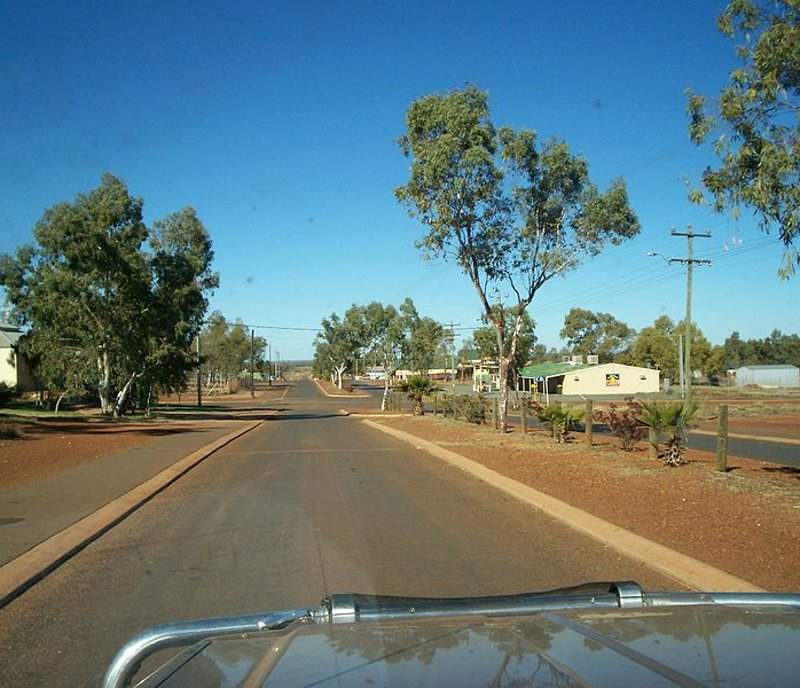Paroo Station Lead Carbonate Mine, located 30km west of Wiluna in Western Australia, is owned and operated by Rosslyn Hill Mining, a wholly-owned subsidiary of LeadFX (formerly Ivernia).
Considered to be the world’s biggest lead carbonate mine, Paroo Station was commissioned in 2005 and produced 300,000 tonnes (t) of lead concentrates before it was placed under care and maintenance in the beginning of 2015 due to the sudden fall in lead price.
LeadFX plans to restart the Paroo Station mining operation by setting up a new hydrometallurgical facility on site to treat lead concentrates and produce up to 70,000t of lead ingots per annum, over more than 15 years of its estimated mine life.
The definitive feasibility study (DFS) for the updated mine plan was completed in February 2018.
Paroo Station mine history
The Magellan deposit of the Paroo Station mine was first discovered in 1991 by Renison and was acquired by Westralian Sands (now Iluka Resources) in 1998.
Polymetals, through its subsidiary Rosslyn Hill Mining, acquired the Paroo Station lead carbonate mine in 2002, after discovering additional deposits in the mine area.
LeadFX acquired Rosslyn Hill Mining from Polymetals in 2003 and formed a joint venture in the same year with Sentient, which agreed to finance the project in exchange for 40% equity interest. LeadFX bought back Sentient’s interest to become the sole owner of Rossyln Hill Mining in April 2005.
The mine was constructed in 2004 and began commercial productions in October 2005.
It was, however, placed under care and maintenance in April 2007 for more than two years due to the government’s investigations into bird fatalities in the vicinity of the Port of Esperance.
Production recommenced in February 2010 with Rosslyn Hill Mining permitted for shipment of lead concentrates in sealed bags within shipping containers through Fremantle Port.
The mine again ceased production in January 2011 following the government order to halt shipment of lead concentrates and facilitate investigation of potential lead egress to the inside of sealed transport containers.
Although the Government lifted order the next month after finding no such evidence of lead egress, Paroo Station was voluntarily put under care and maintenance until April 2013 for a comprehensive review of all processes of the mine.
The mine produced 2.4Mt of ore between 2013 and 2015, before it was put into the recent phase of care and maintenance.
Paroo Station geology and mineralisation
The Paroo Station mine comprises four main lead deposits – Magellan, Gama, Cano and Pinzon, and two satellite deposits- Pizarro and Drake, in the north eastern goldfields region of Western Australia.
These six non-sulphide lead deposits are located in the Earaheedy Basin, on the northern edge of the Archean Yilgarn Craton.
Lead mineralisation at Paroo Station is mainly hosted by Paleoproterozoic quartz-clay breccia, clay, siltstone and sandstone.
Lead reserves at Paroo Station
Paroo Station mine was estimated to hold 8.3Mt of proved ore reserve grading 3.5% lead, as of February 2018.
The probable reserves were estimated to be 22.9Mt grading 4% lead.
Mining method for Paroo Station mine
Paroo Station lead carbonate mine is an open-pit mining operation involving drilling, blasting, loading and hauling.
The mining fleet consists of 120t class backhoe excavators and 85t dump trucks.
As per the new mine plan, the initial production from the mine will be limited to 8Mtpa in the first year and then increased to 10Mtpa for the next three years before gradually decreasing till the end of life of the mine.
Lead processing at Paroo Station
Run-of-mine ore is sent to the nearby processing plant where it goes through screening, crushing, grinding, flotation, dewatering and drying for the production of lead concentrates.
Existing facilities at the Paroo Station processing plant include a 1,219mmx914mm primary jaw crusher, a semi-autogenous grinding (SAG) mill with a 1,350kW motor using 105mm diameter grinding media, a secondary ball with a 1,350kW motor using 65mm diameter grinding media, one rougher floatation facility, two cleaner floatation facilities as well as concentrate thickening and concentrate filtration facilities.
The produced lead concentrate will be further treated in the proposed hydrometallurgical facility on the site for the production of lead ingots.
Estimated to cost $151m, the hydrometallurgical plant will house acid alkali leach circuits, electro-winning tank house and a cathode melt shop.
The proposed modifications in the existing facilities include the addition of a Pebble crusher unit and the addition of a flotation column to produce a final concentrate in the range 68%-72% lead grade to feed the hydrometallurgical facility.
Contractors involved with Paroo Station lead carbonate mine
SNC-Lavalin conducted the DFS for the hydrometallurgical facility of the mine. SRK Consulting prepared the technical and economic feasibility report for the recommencement of Paroo Station mining operation with the hydrometallurgical facility.
AMC Consultants provided mineral reserves estimate and production schedule for the new mine plan. Optiro provided the mineral resource estimation.
Maca Mining was the mining contractor for the Paroo Station lead mine, before it was put under care and maintenance.




